Salomon Quartet - Mozart: The 6 "Haydn" String Quartets (On Period Instruments) (1991)
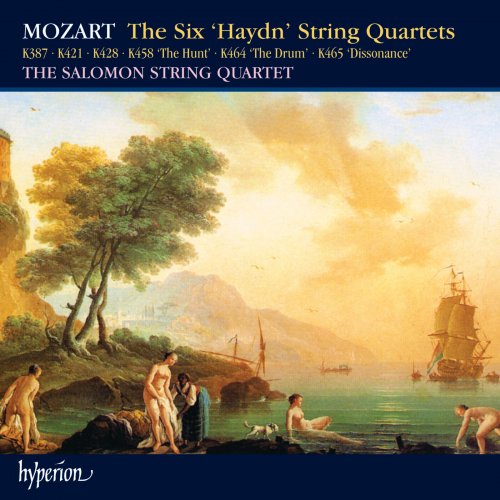
Artist: Salomon Quartet
Title: Mozart: The 6 "Haydn" String Quartets (On Period Instruments)
Year Of Release: 1991
Label: Hyperion
Genre: Classical
Quality: flac lossless (tracks) +Booklet
Total Time: 03:10:45
Total Size: 897 mb
WebSite: Album Preview
TracklistTitle: Mozart: The 6 "Haydn" String Quartets (On Period Instruments)
Year Of Release: 1991
Label: Hyperion
Genre: Classical
Quality: flac lossless (tracks) +Booklet
Total Time: 03:10:45
Total Size: 897 mb
WebSite: Album Preview
CD1
01. String Quartet No. 14 in G Major, K. 387: I. Allegro vivace assai
02. String Quartet No. 14 in G Major, K. 387: II. Menuetto. Allegretto – Trio
03. String Quartet No. 14 in G Major, K. 387: III. Andante cantabile
04. String Quartet No. 14 in G Major, K. 387: IV. Molto allegro
05. String Quartet No. 15 in D Minor, K. 421: I. Allegro
06. String Quartet No. 15 in D Minor, K. 421: II. Andante
07. String Quartet No. 15 in D Minor, K. 421: III. Menuetto. Allegretto – Trio
08. String Quartet No. 15 in D Minor, K. 421: IV. Allegretto ma non troppo
CD2
01. String Quartet No. 16 in E-Flat Major, K. 428: I. Allegro non troppo
02. String Quartet No. 16 in E-Flat Major, K. 428: II. Andante con moto
03. String Quartet No. 16 in E-Flat Major, K. 428: III. Menuetto – Trio
04. String Quartet No. 16 in E-Flat Major, K. 428: IV. Allegro vivace
05. String Quartet No. 17 in B-Flat Major, K. 458 "The Hunt": I. Allegro vivace assai
06. String Quartet No. 17 in B-Flat Major, K. 458 "The Hunt": II. Menuetto. Moderato
07. String Quartet No. 17 in B-Flat Major, K. 458 "The Hunt": III. Adagio
08. String Quartet No. 17 in B-Flat Major, K. 458 "The Hunt": IV. Allegro assai
CD3
01. String Quartet No. 18 in A Major, K. 464 "The Drum": I. Allegro
02. String Quartet No. 18 in A Major, K. 464 "The Drum": II. Menuetto
03. String Quartet No. 18 in A Major, K. 464 "The Drum": III. Andante
04. String Quartet No. 18 in A Major, K. 464 "The Drum": IV. Allegro non troppo
05. String Quartet No. 19 in C Major, K. 465 "Dissonance": I. Adagio – Allegro
06. String Quartet No. 19 in C Major, K. 465 "Dissonance": II. Andante cantabile
07. String Quartet No. 19 in C Major, K. 465 "Dissonance": III. Menuetto. Allegretto – Trio
08. String Quartet No. 19 in C Major, K. 465 "Dissonance": IV. Allegro molto
A father who had decided to send his sons into the great world saw it as his duty to entrust them to the protection of a much celebrated man who, moreover, happened to be his best friend. In like manner I send my six sons to you, most celebrated and very dear friend. They are, in truth, the fruit of a long and very laborious effort, but the hope which many friends have given me that this toil may be in some degree rewarded encourages me, and I flatter myself that these children may one day prove a source of consolation to me. During your last visit to this capital, you yourself, dearest friend, expressed to me your approval of these compositions. Your good opinion encourages me to offer them to you and leads me to hope that you will not consider them wholly unworthy of your favour. May it therefore please you to receive them kindly, and to be to them a father, guide and friend! From this moment, I surrender to you all my rights over them. I beg you, however, to be indulgent to those faults which may have escaped a father’s partial eye, and in spite of them to continue your generous friendship towards one who so highly appreciates it. Meanwhile, I remain with all my heart, dearest friend, your most sincere friend. (W. A. Mozart)
In all Mozart’s published correspondence there is nothing quite like this—surely one of the most generous tributes ever paid by one composer to another. The sincerity of the younger man’s admiration and affection for his friend cannot be doubted; even so, the sentiments are by no means unclouded by personal doubts and fears: isn’t there just a suggestion of envy in the reiteration of the word ‘celebrated’? And, with the benefit of hindsight, one can detect evidence of the strain in Mozart’s relationship with his father: why else this constant appeal to Haydn’s paternal instincts!
And then there is his admission that those ‘six sons’ were ‘the fruit of a long and very laborious effort’; can this be the same Mozart who wrote his three most popular symphonies in less than three months and who allegedly composed the overture to Don Giovanni in a single night? We are so accustomed to the idea of the young genius turning out masterpiece after masterpiece with a kind of ‘divine facility’ that it comes as a surprise to discover that these six so-called ‘Haydn’ Quartets cost him nearly three years of sustained hard work. All the evidence suggests that Mozart found the composition of these Quartets unusually difficult; a good deal of his time was spent in making preparatory sketches and in revising movements already completed, and he would often have to postpone work on one quartet in order to rewrite part of another. In the case of the G major (K387) large sections of the finale had to be completely recomposed, and recent research has revealed that he made several abortive attempts at the finales of the B flat (K458) and A major (K464).
Why this protracted struggle? The answer lies, at least in part, in the dedication to Haydn. In 1781 Mozart had moved to Vienna and, soon after his arrival, he had made the acquaintance of Haydn’s recently published Opus 33 Quartets. According to Haydn these had been composed in ‘a new and special way’ and, as Mozart quickly discovered, this was no mere hyperbole; not only are the six Op 33 Quartets more concentrated, more powerfully integrated than anything Haydn had written before, but there is also a noticeable moving away from the melody-plus-accompaniment writing of the early classical style to a kind of musical argument in which each of the four instruments is given an equal share. Mozart obviously accepted Haydn’s Quartets as a personal challenge, and before long he was making preliminary sketches for a set of his own in which this new kind of texture was to be adapted and refined to suit this particular mode of musical thinking. In the event, it turned out to be the most arduous task he ever undertook. If the six ‘Haydn’ Quartets seem to the modern listener to be triumphantly successful it is only because Mozart had the strength and determination to persist even when his musical material proved intractable. Nevertheless there is little sense of strain, either emotional or compositional, in these Quartets; the listener is much more likely to be impressed by the richness of Mozart’s invention and the extraordinary range of moods evoked by his music.
Any listener who has taken the trouble to get to know all six of these works cannot fail to be impressed by their wide expressive range and technical ingenuity. In fact it is fair to say that they show greater variety of mood and compositional resource than any comparable set by Haydn. One means no disrespect to Haydn—his 68 Quartets are as ingenious and varied as any group of instrumental works, but his development as a quartet composer was much more gradual and consistent than that of Mozart. Moreover, Mozart was able to devote an unusually long time to his six Quartets: there was no pressing deadline to meet, and so for once in his life he had leisure to experiment—to try out new styles and even to rewrite whole movements when he was less than entirely happy with the results. Altogether the six ‘Haydn’ Quartets occupied him for over two years, the last (K465) being completed in January 1785.
In them we see Mozart experimenting with monothematicism (K464, finale), chromatic enrichment of harmony (K428, first two movements), complex and disquieting harmonic progressions (K465, slow introduction) and the integration of fugal techniques with sonata principles (K387, finale); however the problem that seems to have occupied him most, at least at first, was the distribution of the musical argument equally between the four instruments. It was this aspect of Haydn’s innovatory Op 33 set which Mozart had found so challenging and, rather than resort to mere imitation, he had become determined to expand and refine this style—in short, to make it his own. However, as Mozart himself admitted, the process cost him a ‘long and laborious effort’ and, despite the consummate artistry of the writing, there are moments when the attentive listener can, as it were, hear the composer thinking.
String Quartet in G major K387
The opening of the G major Quartet, K387, is a good example: a fine resolute tune is presented by the first violin with strong support from the lower voices, but by bar five Mozart seems concerned to develop a more egalitarian approach—the little one-bar answering phrase is heard first on the viola, then on the second violin, and finally on the first violin where it is subsequently decorated and expanded. The opening theme is then presented in canon between the two violins, as if Mozart were eager to demonstrate that even this is suitable material for discourse.
What is remarkable, however, is that this vivacious and spontaneous-sounding music gives only the minutest hint of the immense effort which went into its composition. The witty and genial Minuet, with its darker G minor Trio, and especially the wonderful C major Andante, could have been written with the same fluency as the Don Giovanni Overture—allegedly composed in a single night. The listener could be forgiven for failing to notice that the finale is actually a remarkable technical achievement. Here Mozart gives us not a straightforward fugue but a tautly argued sonata allegro in which an almost liturgical fugal style is juxtaposed with passages of simple tune-plus-accompaniment—with irresistibly comic effect. Perhaps the most delightful moment of all occurs at the very end: a piano reprise of the opening fugal subject runs into a simple homophonic cadence; after so much contrapuntal disputation the four voices have managed to conclude in quiet accord.
String Quartet in D minor K421
If the D minor Quartet, K421, sounds more troubled than any of its companions, the expression still has an objective quality: we are a long way from the ‘confessional’ outpourings of some of the later romantics. The opening theme of the first movement is certainly highly expressive, but the music’s elegance and concision make any attempt at personal-dramatic interpretation sound faintly ludicrous. The closely imitative writing in the development reflects Mozart’s growing interest in counterpoint: he had recently been introduced to the music of the Baroque contrapuntalists by his patron, the Baron van Swieten.
The F major Andante is more pithy, less melodically generous than many of Mozart’s other slow movements. The short, broken phrases of the first theme suggest that here Mozart was consciously imitating Haydn, as does the inclusion of a dramatic middle section in the tonic minor.
According to Constanze Mozart, the Minuet (Allegretto) expresses Mozart’s reaction to the rather painful birth of their first son, Raimund (Mozart was composing in an adjacent room at the time). Up to a point the mood of the music appears to confirm this story, but then what are we to make of the ghostly D major Trio? After the intense chromaticism of the Minuet this strangely fragile, almost mechanically pretty music has a distinctly ironic flavour.
The Finale (Allegretto ma non troppo) is cast in variation form, with a short coda in a faster tempo. The theme itself is curiously ambiguous: conflicting emotions of gaiety and melancholy are aroused by the jaunty 6/8 rhythm and the chromatic D minor-oriented harmonies. The fourth variation, in D major, brings a respite before the unequivocally anguished outbursts of the coda. The final tierce de picardie comes too late to provide any sense of consolation.
String Quartet in E flat major K428
By the time he came to compose the E flat major Quartet, K428, Mozart seems to have felt that Haydn’s ‘new and special style’ of musical discourse was now his own, and that the time was right for further exploration. The opening unison theme of K428 is remarkable for its chromatic enrichment of the tonic triad, and this sets the pattern for many of the movement’s subsequent harmonic adventures. Particularly subtle is the way Mozart uses a canonic version of this theme to set in motion the rapid, dramatic modulations of the development section. Even so, nothing in this movement is quite as striking as the yearning chromaticisms in the second group of the Andante—strongly suggestive of the opening of Wagner’s Tristan Prelude. Nor is this a single isolated example: the movement as a whole derives its dark colouring from the frequent use of richly dissonant suspensions and passing notes—all the more effective for having been prefigured in the first four bars of the Quartet.
The harmonic language of the Minuet is much simpler—unusually so for Mozart; in fact the style and mood of this movement are strikingly reminiscent of Haydn, in particular the Minuet of the E flat major Quartet Op 33 No 2. Mozart’s Trio even manages a gentle Haydnesque joke—the initial implication of C minor is smartly contradicted by a sforzando chord of B flat in bar eight. This kind of playfulness dominates the finale—a sort of compromise between conventional sonata and rondo forms. The opening theme approaches on tiptoe, in broken quavers, and the listener is completely unprepared for the explosion of first violin brilliance that follows. In the coda this strangely fragmentary little idea suddenly acquires completely new significance as the accompaniment to a soaring first violin line. Such lyricism is short-lived, however, and the movement ends with four staccato chords—first cautiously, pianissimo, then—emphatically—forte.
String Quartet in B flat major K458 (‘The Hunt’)
K458 and K464 have many structural features in common, yet each has its own distinctive sound-world. K458’s opening theme, a jaunty 6/8 ‘horn-call’, has earned the Quartet the nickname ‘The Hunt’, useful perhaps as a thematic aide memoire, but rather less appropriate to the work as a whole. Still, there is a kind bucolic charm about the first movement; the quiet tune that opens the development section, with its characteristic ‘yodelling’ sixths, has prompted more than one writer to speak of shepherd pipes. It’s difficult to believe that this appealingly straightforward music could have caused Mozart particular difficulties, but, as the Mozart scholar Alan Tyson has shown, K458 occupied him for over a year, and there were a number of false starts.
A comparatively short Minuet follows. Its irregular phrase structures tease the ear, if gently, though the first section adds up to a conventional eight-bar period: here the irregularity is only on the surface. A few well placed sforzandi provide occasional touches of humour in the Trio, but on the whole Mozart prefers to charm rather than startle his listeners.
With the Adagio, K458 moves onto a different plane. An arresting opening theme in E flat major—once again alternating ‘piano’ and ‘sforzando’ markings—leads, via a long and elegantly decorated violin line, to a rapt second subject in B flat, with violin answered tellingly by high cello. There is no development section; the ideas simply return in the original order, the beautiful violin and cello theme now in the tonic. A brief coda brings the music to an affecting close.
As in the first two movements, everything in the finale is good-humoured and relatively uncomplicated. This was Mozart’s second attempt at a finale for K458: the original, in the style of a polonaise, got as far as the 65th bar before Mozart realized that it wasn’t what he wanted.
String Quartet in A major K464 (‘The Drum’)
K464 also seems to have caused Mozart problems. As in K458, he abandoned his original finale after having got some way into the movement (170 bars this time); moreover the autograph is full of cancellations and rewritings. This was Beethoven’s favourite of the ‘Haydn’ set: he would probably have been particularly struck by the richly inventive variations of the Andante, and the virtual monothematicism of the finale (thematically this is the most economical of the ‘Haydn’ Quartets). K464 opens with an A major sonata allegro, combining thematic grace with power and developmental ingenuity. The tiny codetta at the end of the exposition gains a splendidly forthright answering phrase at the close of the movement, a touch of humour that for some reason baffled the musicologist Hans Keller.
The Minuet is longer, and harmonically more adventurous than that of K458. Its almost exclusive concentration on two short motives would have appealed strongly to Beethoven, as would the telling inclusion of a bar of silence just after the first repeat. Abrupt dynamic contrasts characterize the E major Trio, lending piquancy to what would otherwise have been a disarmingly simple tune.
Mozart casts his slow movement in the form of a set of variations, based on an amiable 2/4 theme that might equally well have occurred to Haydn himself; however, as the movement progresses it rises to quite unexpected heights of eloquence. The ‘drum tap’ figures in the final variation (taken up by viola and violins in the coda) have led to K464 being christened ‘The Drum’, though for some reason this nickname has never caught on in Britain.
As observed above, the finale of K464 is based almost entirely on one theme, but the variety of textures and harmony that Mozart conjures from it is quite remarkable. The coda builds to a forceful climax, then falls to a delightfully conclusive pianissimo.
String Quartet in C major K465 (‘Dissonance’)
At some point in the early nineteenth century the C major Quartet, K465, acquired the nickname ‘The Dissonance’. This was undoubtedly due to the extraordinary harmonic boldness of the first movement’s slow introduction, though it is worth pointing out that the unsettling effect of this music is due at least as much to the rapidity and remoteness of the modulations as to the dissonances themselves. The dark tentative mood of the Adagio is soon dispelled by the C major brightness of the Allegro: note how the opening theme transforms the plaintive rising figure from bar 4 of the introduction.
The slow movement is marvellously eloquent and contains some of Mozart’s most effective ‘conversational’ writing. A passage in the second thematic group has caused some controversy amongst musicologists: did Mozart really intend the violins and viola to be silent in bars 26 and 75? Some performers have chosen to ‘correct’ this passage; The Salomon Quartet, however, play it as it appears in the manuscript and first edition—it certainly throws a completely different light on the ‘filled-out’ version in bar 85.
Haydn’s influence is strongly in evidence in the amusingly abrupt forte-piano contrasts of the Minuet; in the Trio, however, the humour is entirely Mozartian. As in the equivalent section of K421 the mood is ironic, but here the face behind the mask is comic, not tragic: the first violin’s C minor declamations are surely too melodramatic to be taken seriously.
The long-term harmonic adventures of the Finale (Allegro molto) are hardly less daring than those of the first movement’s Adagio introduction, but here the effect is thoroughly exhilarating. This so-called ‘Dissonance’ Quartet is, in fact, one of Mozart’s most brilliant and high-spirited works.
The six ‘Haydn’ Quartets received their first performance in January 1785 in the presence of the dedicatee. Haydn’s reaction? Shortly afterwards he told Leopold Mozart: ‘Before God and as an honest man, I tell you that your son is the greatest composer known to me either in person or by name.’
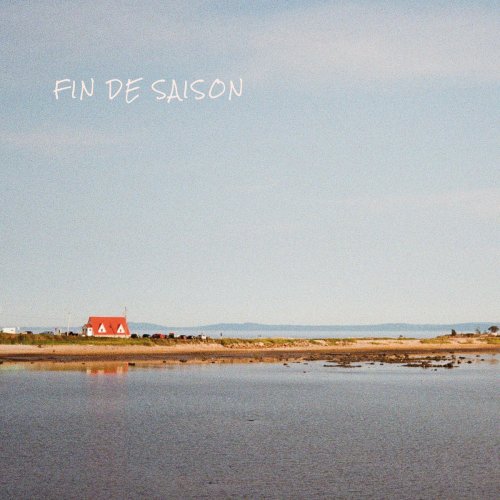
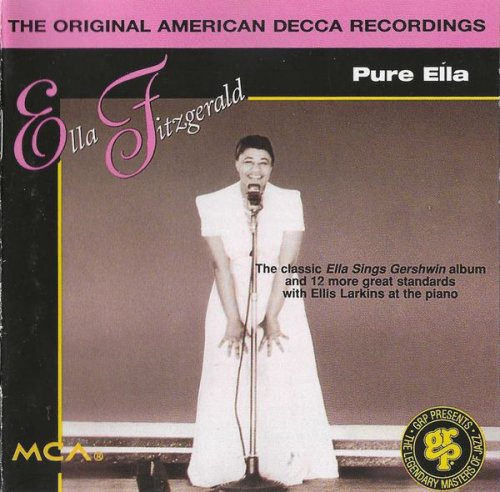



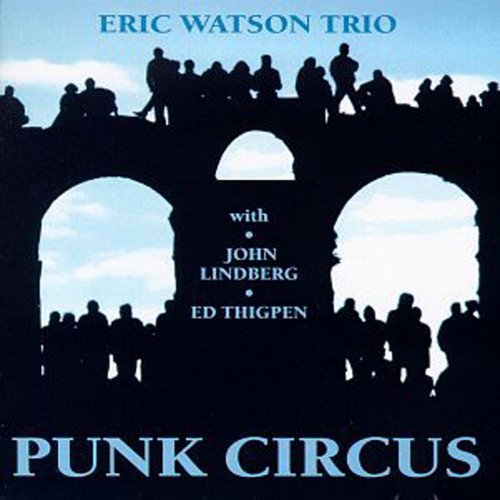
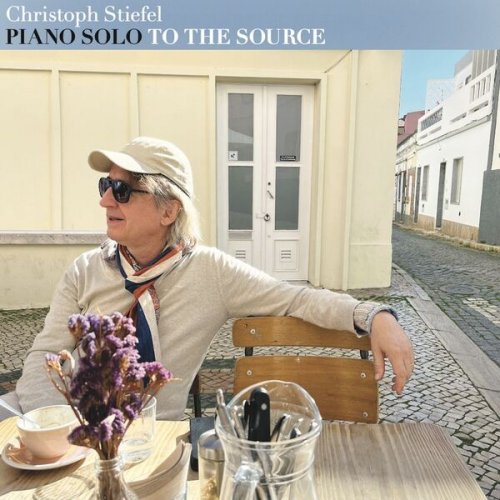
![The Mood Mosaic - The Sexploitation (Pulp Grooves From The Mondo Porno Vault) (2025) [Hi-Res] The Mood Mosaic - The Sexploitation (Pulp Grooves From The Mondo Porno Vault) (2025) [Hi-Res]](https://www.dibpic.com/uploads/posts/2025-12/1766131648_uhod8d4qn4msi_600.jpg)
![Clifton Chenier - Live at the San Francisco Blues Festival (Live) (1985) [Hi-Res] Clifton Chenier - Live at the San Francisco Blues Festival (Live) (1985) [Hi-Res]](https://img.israbox.com/img/2025-12/20/1okh4wxr3ose6s79w4nxw7vzi.jpg)